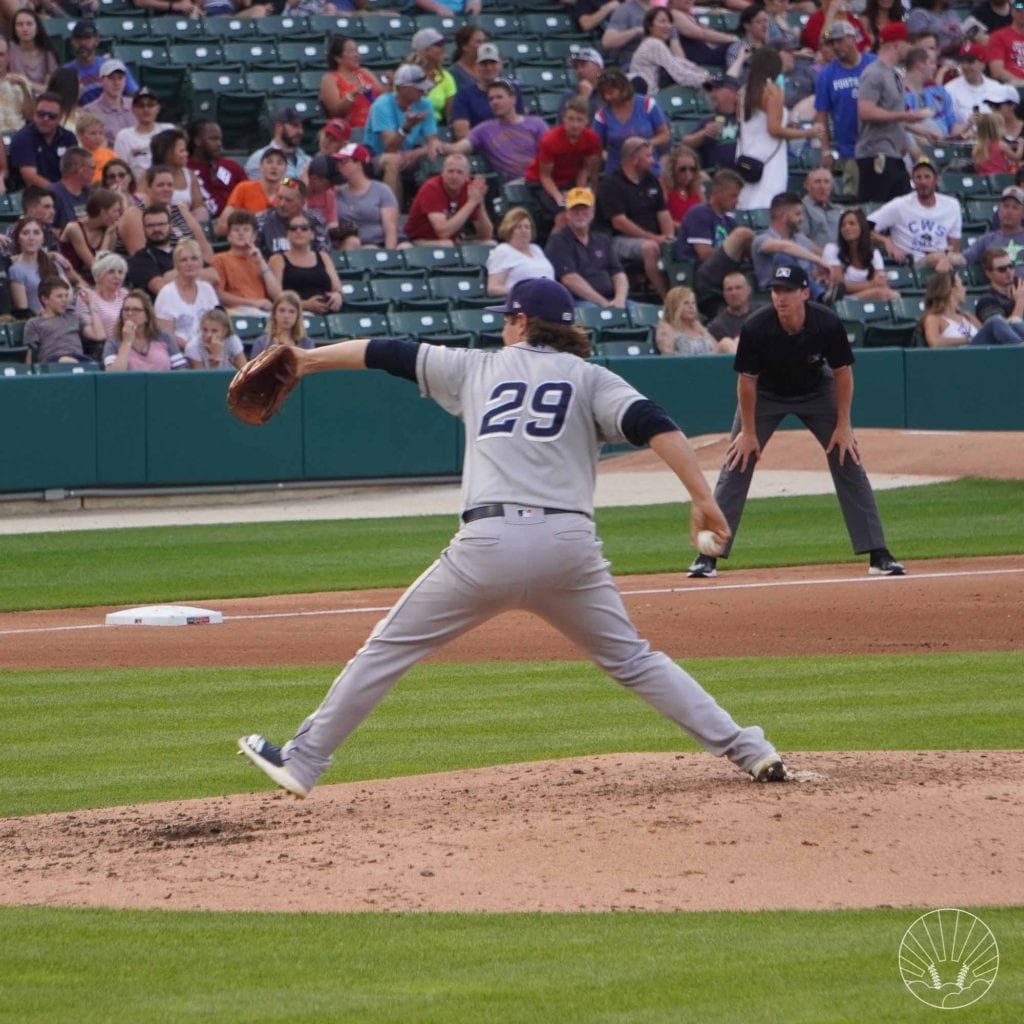*This article may contain product links which pay me a small commission if you make a purchase. Learn more.
The slide step is a pretty straightforward thing, if it’s taught correctly. The thing is, though, that most coaches teach it incorrectly, and/or don’t have a real sense of what’s necessary and good from the stretch. In this short post, we’ll go over what we do and don’t want from our slide step pitching mechanics, and I’d highly suggest watching the short video demonstrating all of the above.
Problem: The Pitching Slide Step Is Loosely defined
If ten pitching coaches teach the slide step to ten pitchers, they all might mean and teach a different thing. When I ask a pitcher to show me his slide step I’m prepared to get one of a handful of different versions:
- Big leg kick (too slow – few call this a slide step)
- Hybrid leg kick (knees knock, weight shifts back – what I teach)
- No leg kick, just lift and go (what many coaches teach, which is overly difficult for a young pitcher to shift his weight properly)
So, Which Is it – Pick Up and Go? Or a Little Counter-Movement Leg Kick?
If we go by what the vast majority of pro pitchers do, it’s #2.
If you watch pro pitchers, few of them just lift their leg and push – most bring their leg backward before going forward, as it’s the easiest way to both be quick AND to load the back leg, which we need to maintain proper weight shift and power transfer from the back hip to the front.
The ones that just lift and go are still just shifting their weight back, just without the leg kick. The problem is that its difficult for amateur pitchers to do it this way – most will lift and bring their leg back, unlike Fernando Rodney below (who does everything right, but is exceptionally fast to a degree that is difficult for young pitchers to emulate).
How NOT To Do The Slide Step
We can’t be so fast that we sacrifice our normal rhythm, weight shift and overall ability to make a quality pitch. To whatever degree a pitcher loads his back leg from the windup or the stretch with a full leg kick, he needs to still load his weight that same amount from the stretch. But, we just do this with a shorter, quicker leg kick.
When pitchers are forced into an ultra fast, lift-and-go slide step, they usually can’t get the ball down. This is for an obvious reason – their arm can’t catch up to the newer, exceedingly fast pace that their lower body is now using. I hear it numerous times per year that this exact scenario happens, and we have to just get the pitcher to load his back leg more while keeping his leg kick low, short and quick.
We Don’t Need to Be THAT Fast, Anyway.

Being ultra fast to the plate is going to only reduce catcher pop time by an additional 0.2 seconds, and at the amateur level, most stolen bases are going to be stolen long before the catcher even receives the pitch. Young pitchers need to be taught how to vary their holds and timing, when to pick off and how to identify higher risk running situations. If a pitcher takes care of all the aforementioned, then he’ll hold the runner close enough to give his catcher a chance. And, by using a better slide step, he’ll have a much better chance of making a high-quality pitch.
Being Too Fast Reduces Pitch Quality
As a pitcher, quality of the pitches we throw is always the #1 priority. When we increase slide step speed too much, it changes one’s rhythm, making it hard to locate a pitch as precisely. Poorly located pitches result in walks and hard-hit balls, which have a much larger effect on the quality of a pitcher’s outing relative to one single runner getting a slightly bigger jump.
Our #1 focus must always be on giving a pitcher the ability to make quality pitches; a rushed slide step steals this ability.
The Best Way to Do The Slide Step
The video below is very thorough – give it a watch and subscribe to my YouTube channel for more!
If you found this article helpful, you’ll like my pitching book, which contains tons about the slide step, holding runners and much more.
